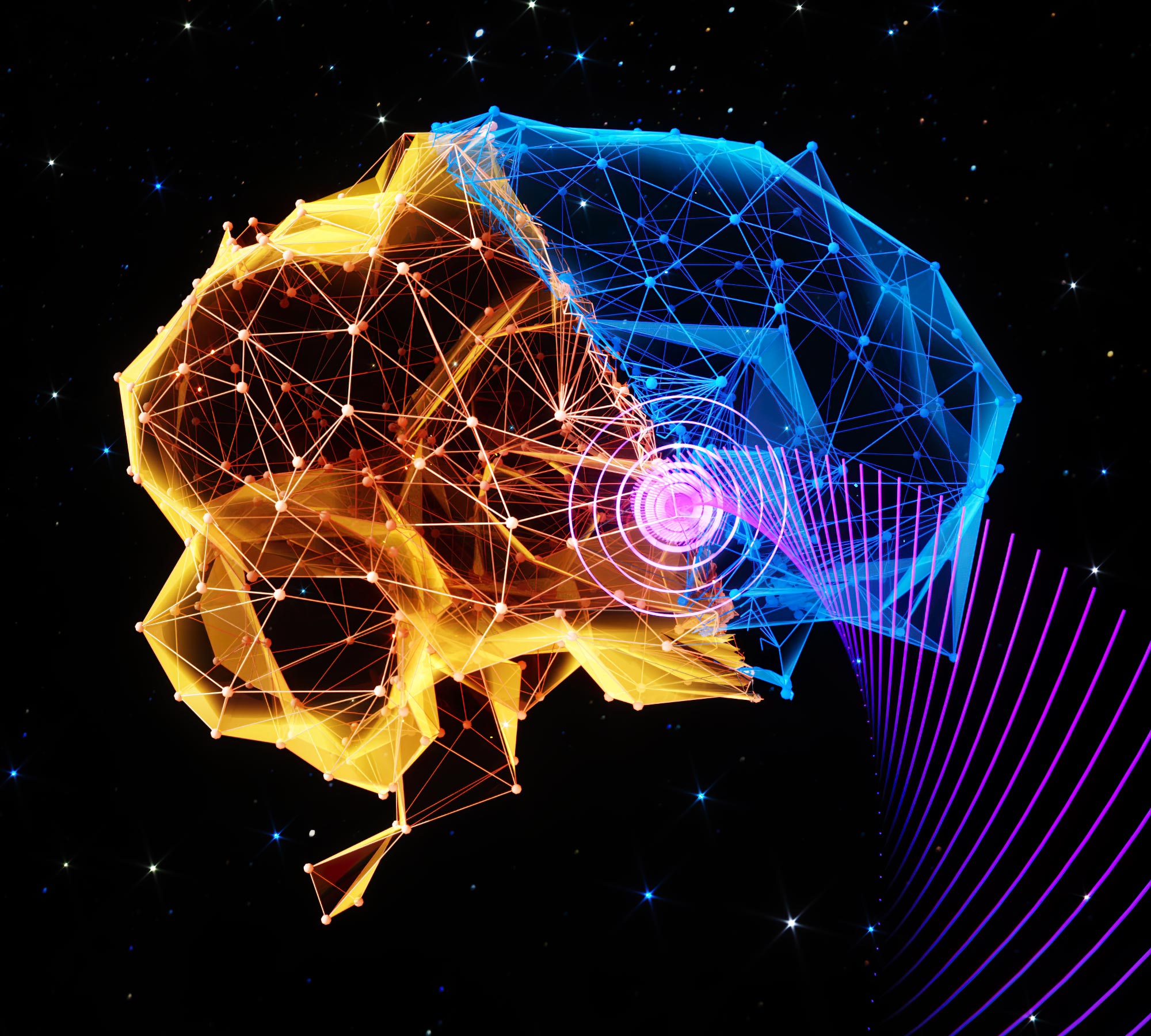
Mithilfe von Ultraschall-Hirnstimulation induzieren Wissenschaftler einen schlafähnlichen Zustand
von

Ein multidisziplinäres Team unter der Leitung von Assistenzprofessor Hong Chen von der Washington University in St. Louis hat eine neuartige, nicht-invasive Methode entwickelt, um bei Säugetieren einen winterschlafähnlichen Zustand herbeizuführen, indem Ultraschall auf das Zentralnervensystem gerichtet wird. Es wurde gezeigt, dass die Technik, bei der eine präoperative Region des Gehirns stimuliert wird, die Körpertemperatur und die Stoffwechselrate bei Mäusen wirksam senkt, was zu einem Zustand der Erstarrung führt, einem natürlichen Mechanismus, den manche Tiere nutzen, um extreme Bedingungen zu überleben. Bildnachweis: Chen Lab, Washington University in St. Louis
Laut einer Studie in St. Louis haben Wissenschaftler der Washington University in St. Louis eine Möglichkeit entwickelt, bei Säugetieren mithilfe von Ultraschallstimulation des Gehirns einen winterschlafähnlichen Zustand herbeizuführen Naturstoffwechsel. Diese nicht-invasive Technologie kann in Szenarien wie der Raumfahrt oder bei Patienten mit schweren Gesundheitsproblemen eingesetzt werden, um Energie und Wärme zu sparen.
Einige Säugetiere und Vögel verfügen über eine clevere Möglichkeit, Energie und Wärme zu sparen, indem sie in den Winterschlaf gehen, in dem ihre Körpertemperatur und ihr Stoffwechsel sinken, damit sie tödliche Umweltbedingungen wie extreme Kälte oder Nahrungsmangel überleben können. Während in den 1960er-Jahren ein ähnlicher Zustand für Wissenschaftler auf Weltraumreisen oder für Patienten mit lebensbedrohlichen Gesundheitszuständen vorgeschlagen wurde, ist die sichere Auslösung eines solchen Zustands noch in weiter Ferne.
Hong Chen, außerordentlicher Professor an der Washington University in St. Louis, und ein multidisziplinäres Team lösten bei Mäusen einen Winterschlaf-ähnlichen Zustand aus, indem sie mithilfe von Ultraschall eine präoperative Region des Gehirns stimulierten, die zur Regulierung der Körpertemperatur und des Stoffwechsels beiträgt. Zusätzlich zur Maus, die von Natur aus Winterschlaf hält, lösten Chen und ihr Team bei Mäusen, die keinen Winterschlaf halten, einen Winterschlaf aus. Ihre Ergebnisse wurden am 25. Mai in der Zeitschrift Nature veröffentlicht Naturstoffwechseldemonstrierte die erste nicht-invasive und sichere Methode, einen schlafähnlichen Zustand herbeizuführen, indem sie auf das Zentralnervensystem abzielte.
Chens Team nutzte Ultraschall, um bei Mäusen und Ratten sicher und nicht-invasiv einen winterschlafähnlichen Zustand herbeizuführen. Bildnachweis: Video mit freundlicher Genehmigung von Chen Lab, Washington University in St. Louis
Chen, Assistenzprofessorin für Biomedizintechnik an der McKelvey School of Engineering und Radiation Oncology am College of Medicine, und ihr Team, darunter Yaoheng (Mack) Yang, ein Postdoktorand, haben einen tragbaren Ultraschallwandler zur Stimulation von Zellen entwickelt. Nerv im Hypothalamus. Bei der Stimulation zeigten die Mäuse einen Abfall der Körpertemperatur um etwa 3 Grad[{“ attribute=““>Celsius for about one hour. In addition, the mice’s metabolism showed a change from using both carbohydrates and fat for energy to only fat, a key feature of torpor, and their heart rates fell by about 47%, all while at room temperature.
The team also found that as the acoustic pressure and duration of the ultrasound increased, so did the depth of the lower body temperature and slower metabolism, known as ultrasound-induced hypothermia and hypometabolism (UIH).
“We developed an automatic closed-loop feedback controller to achieve long-duration and stable ultrasound-induced hypothermia and hypometabolism by controlling of the ultrasound output,” Chen said. “The closed-loop feedback controller set the desired body temperature to be lower than 34 C, which was previously reported as critical for natural torpor in mice. This feedback-controlled UIH kept the mouse body temperature at 32.95 C for about 24 hours and recovered to normal temperature after ultrasound was off.”
To learn how ultrasound-induced hypothermia and hypometabolism is activated, the team studied the dynamics of the activity of neurons in the hypothalamus preoptic area in response to ultrasound. They observed a consistent increase in neuronal activity in response to each ultrasound pulse, which aligned with the changes in body temperature in the mice.
“These findings revealed that UIH was evoked by ultrasound activation of hypothalamus preoptic area neurons,” Yang said. “Our finding that transcranial stimulation of the hypothalamus preoptic area was sufficient to induce UIH revealed the critical role of this area in orchestrating a torpor-like state in mice.”
Chen and her team also wanted to find the molecule that allowed these neurons to activate with ultrasound. Through genetic sequencing, they found that ultrasound activated the TRPM2 ion channel in the hypothalamus preoptic area neurons. In a variety of experiments, they showed that TRPM2 is an ultrasound-sensitive ion channel and contributed to the induction of UIH.
In the rat, which does not naturally go into torpor or hibernation, the team delivered ultrasound to the hypothalamus preoptic area and found a decrease in skin temperature, particularly in the brown adipose tissue region, as well as about a 1 degree C drop in core body temperature, resembling natural torpor.
This multidisciplinary team consists of Jonathan R. Brestoff, MD, PhD, an assistant professor of pathology and immunology at the School of Medicine; Alexxai V. Kravitz, an associate professor of psychiatry, of anesthesiology and of neuroscience at the School of Medicine, and Jianmin Cui, a professor of biomedical engineering at the McKelvey School of Engineering, all at Washington University in St. Louis. The team also includes Michael R. Bruchas, a professor of anesthesiology and of pharmacology at the University of Washington.
“UIH has the potential to address the long sought-after goal of achieving noninvasive and safe induction of the torpor-like state, which has been pursued by the scientific community at least since the 1960s,” Chen said. “Ultrasound stimulation possesses a unique capability to noninvasively reach deep brain regions with high spatial and temporal precision in animal and human brains.”
Reference: “Induction of a torpor-like hypothermic and hypometabolic state in rodents by ultrasound” by Yaoheng Yang, Jinyun Yuan, Rachael L. Field, Dezhuang Ye, Zhongtao Hu, Kevin Xu, Lu Xu, Yan Gong, Yimei Yue, Alexxai V. Kravitz, Michael R. Bruchas, Jianmin Cui, Jonathan R. Brestoff and Hong Chen, 25 May 2023, Nature Metabolism.
DOI: 10.1038/s42255-023-00804-z
This work was supported by the National Institutes of Health (R01MH116981, UG3MH126861, R01EB027223, and R01EB030102). JRB is supported by NIH (DP5 OD028125) and Burroughs Wellcome Fund (CAMS #1019648).

„Böser Kaffee-Nerd. Analyst. Unheilbarer Speckpraktiker. Totaler Twitter-Fan. Typischer Essensliebhaber.“
